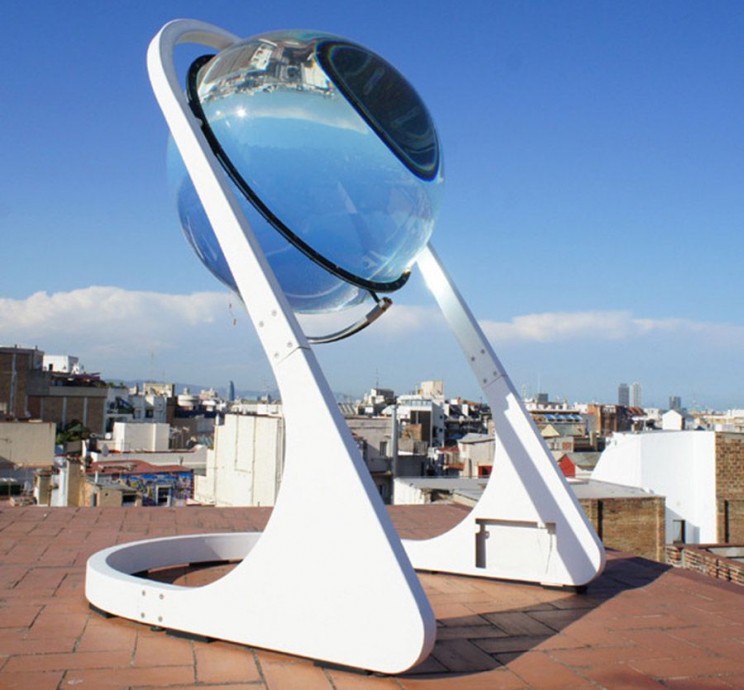Problem Statement
The proposed project seeks to design a revolutionary product that can address the problem of energy shortage. The suggested item or product is a spherical sun power generator. This new innovation is capable of minimizing the challenges associated with photovoltaic cells or solar panels. It will also conserve the natural environment and reduce energy expenses.
Project Scope
In terms of scope, this project focuses on the creation of a spherical sun power generator that is appropriate for middle-sized homes and companies. Since this technology is on its infancy, different stakeholders will have to be informed about the benefits of this product and its ability to meet the needs of more users (Sadhu et al. 35). A prototype will be designed and developed during this project. The major requirements include adequate financial resources, software and hardware equipment, and human resources. The project specifications include the design, production or acquisition of key parts, and final assembly to deliver the targeted product. This will be followed by testing to ensure that it delivers the intended aims. The major constraints will include the issue of time and lack of supportive resources.
Introduction
Human beings will always use energy for lighting and industrial purposes. The concepts of sustainability and affordability are essential when selecting the most appropriate source of power. The proposed spherical sun power generator is a superior product that can reduce energy costs and conserve the natural environment (Sadhu et al. 38). The first objective of this project is to come up with the best design for the product. The second one is to identify and acquire the needed parts and software in a timely manner. The third one is to assemble and test the product to ensure that it is functioning effectively. In terms of design and approach, the product will be based on the model designed by Andre Broessel.
Design Methodology
A number of steps will be considered to deliver the intended goals. The first one is to form teams that focus on specific aspects of the project. The second phase is designing the targeted product based on Broessel’s design or model (see fig. 2). The third one is identifying and acquiring the needed materials and labor (see fig. 1). This will be followed by the product assembly and testing processes.


Project Plan
From this Gantt chart, it is evident that the design and completion of this product will be achieved in four weeks. All team members will have to be involved if positive results are to be recorded. The first task is that of developing the right design for the generator (McFadden). This will be followed by the identification and acquisition of the required materials. The third stage is creating or developing the intended product. The final one will be that of testing. Each step or activity will take the time indicated in the Gantt chart presented below (see fig. 3). The team will have four members. Member A will be the one in charge of acquiring the right resources and materials. Member B will be required to manage the financial and technical issues of the project. Member C will document every undertaken activity. Member D will engage in continuous research and study to present evidence-based ideas for delivering positive results. All the team members will be involved in designing, assembling, and testing of the targeted generator.

Proposed Budget
Adequate funds will be required to ensure that this project is completed successfully. The cost of different parts and components will have to be considered. The projected expenditure or budget for this project will be around 2,800 US dollars (see fig. 4).
Fig. 4: Proposed budget
Project Deliverables
After the successful completion of this project, several outcomes or results will be available to the targeted beneficiaries. The first one is that the finished product will be available for analysis and testing. The next one is a project report that will detail the activities undertaken and the unique roles of all team members. The final document will also present a detailed description of the products and how different users stand to benefit from it (McFadden). These deliverables will be instrumental in engaging key stakeholders and encouraging more people to appreciate the final product.
Conclusions
The above discussion has presented a detailed proposal that can be implemented to deliver the targeted product in less than five weeks. All members of the team will complete their roles diligently in order to record positive results. The suggested product is revolutionary in nature and presents a rare opportunity to companies and homeowners to have a sustainable source of energy. It will address the problems of climate change and global warming since they continue to affect the world today. The benefits include reduced power costs and maximum energy production. The major limitation is that the product is expensive, thus being unavailable to more people.
Works Cited
McFadden, Christopher. “Look into the Future with this ‘Crystal Ball’ Spherical Sun Power Generator.” Interesting Engineering, 2019. Web.
Sadhu, Moumita, et al. “Role of Solar Power in Sustainable Development of India.” TELKOMNIKA Indonesian Journal of Electrical Engineering, vol. 14, no. 1, 2015, pp. 34-41.
